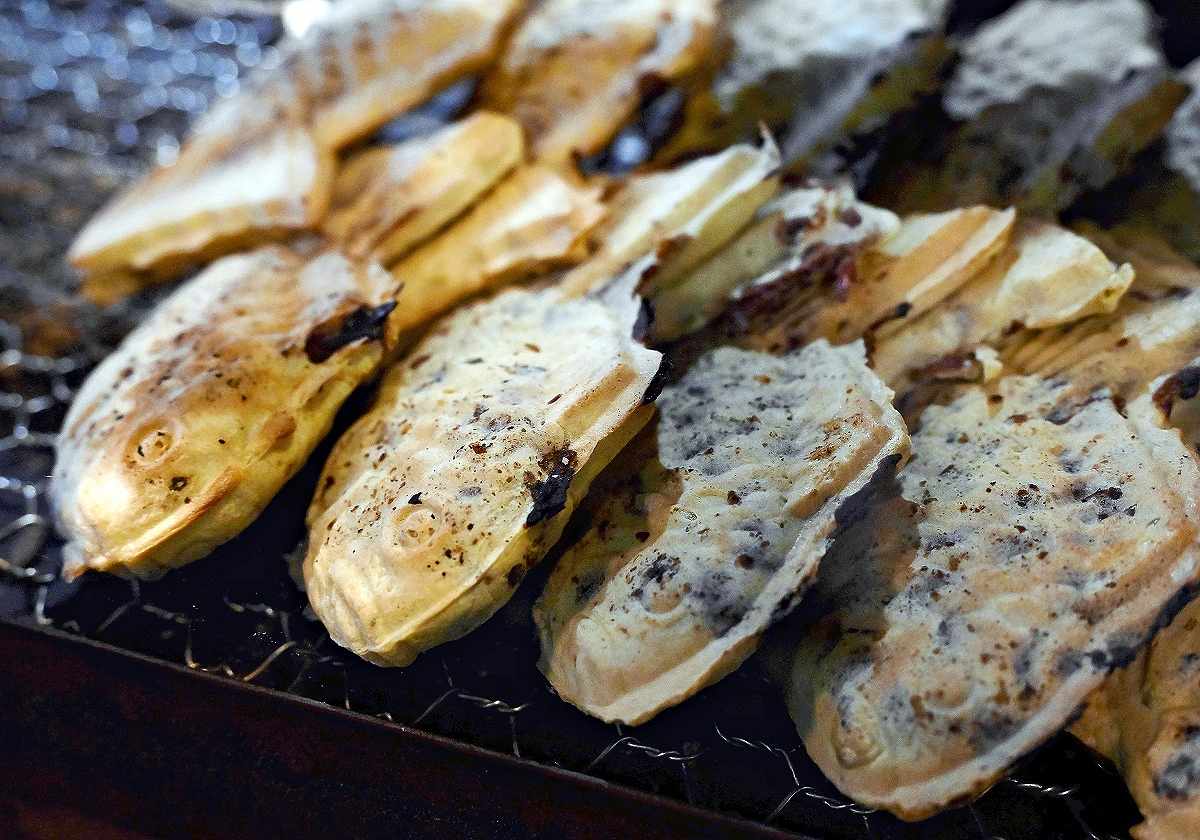
Traditionally baked taiyaki have such a thin crust that the anko red bean paste inside is visible.
15:00 JST, October 29, 2024
In a corner of a shopping street lined with a variety of stores in high-end residential area Azabu-Juban in Minato Ward, Tokyo, there is a shop with a noren — a traditional Japanese curtain at shop entrances — and a signboard that looks like it has been there for years. On the noren, “taiyaki” is written in hiragana. The aroma of azuki beans wafting from the store drew my attention, and I stepped inside.
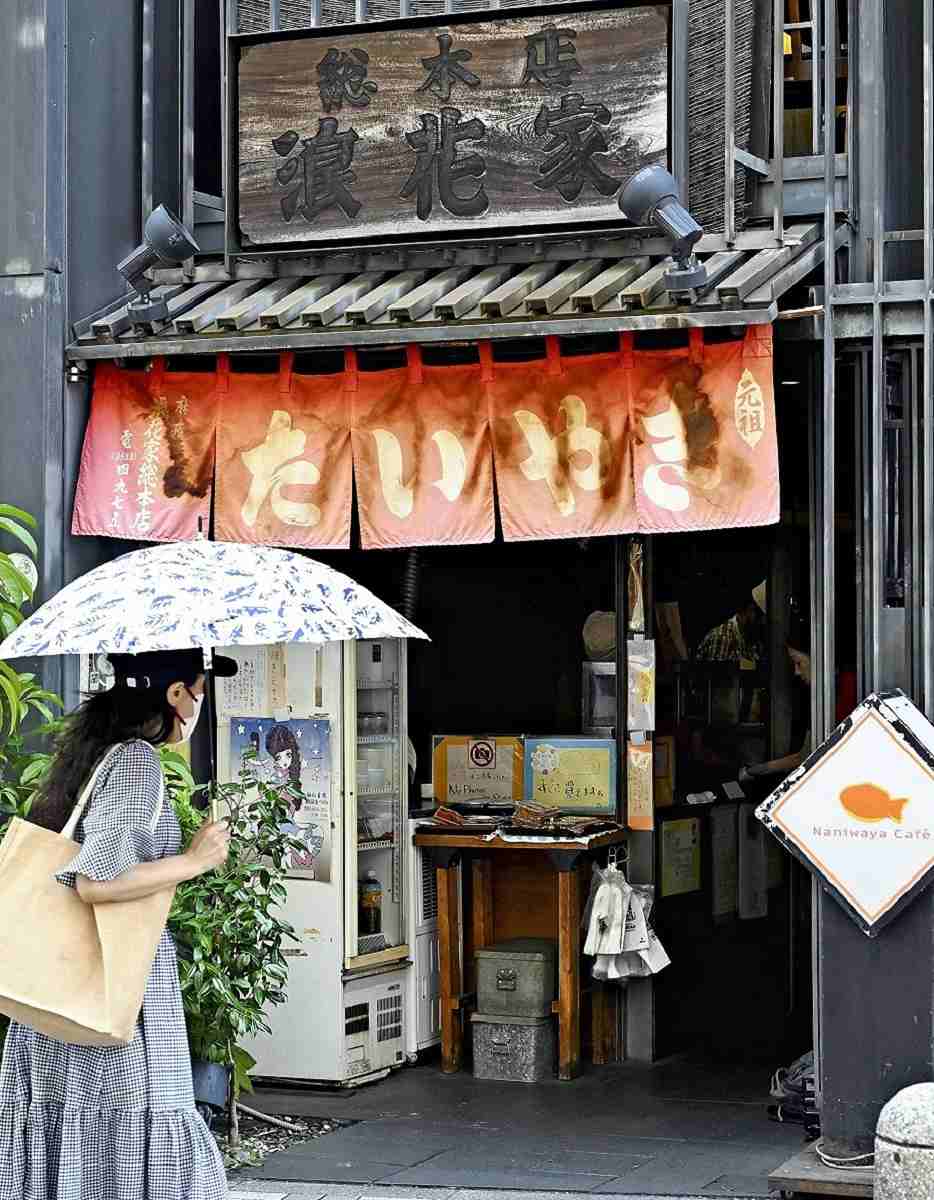
A red noren curtain hangs over the entrance of Naniwaya Sohonten.
The shop is Naniwaya Sohonten, believed to be the place where taiyaki originated. Taiyaki, literally meaning baked sea bream, are fish-shaped baked cakes containing anko sweet red bean paste. In 1909, a pair of brothers moved from the Kansai region and established the shop, relocating to the current location in around 1948.
The conventional method of baking taiyaki is to sandwich the batter between two long handles, each of which has a half-fish-shaped mold on the end, using a device called a hashimono. The store calls the method “ipponzuri,” which means “fishing with a single line” in Japanese.
The baking process can be seen up close in the store. Masahiro Kanbe, 67, the fourth-generation owner of the store, says, “Baking quickly makes the crust crispy, which makes a difference in the taste when eaten long after baked.” He can grill 100 taiyaki in an hour, using about 10 hashimono at the same time. When I held a hashimono, I was surprised at how heavy it was.

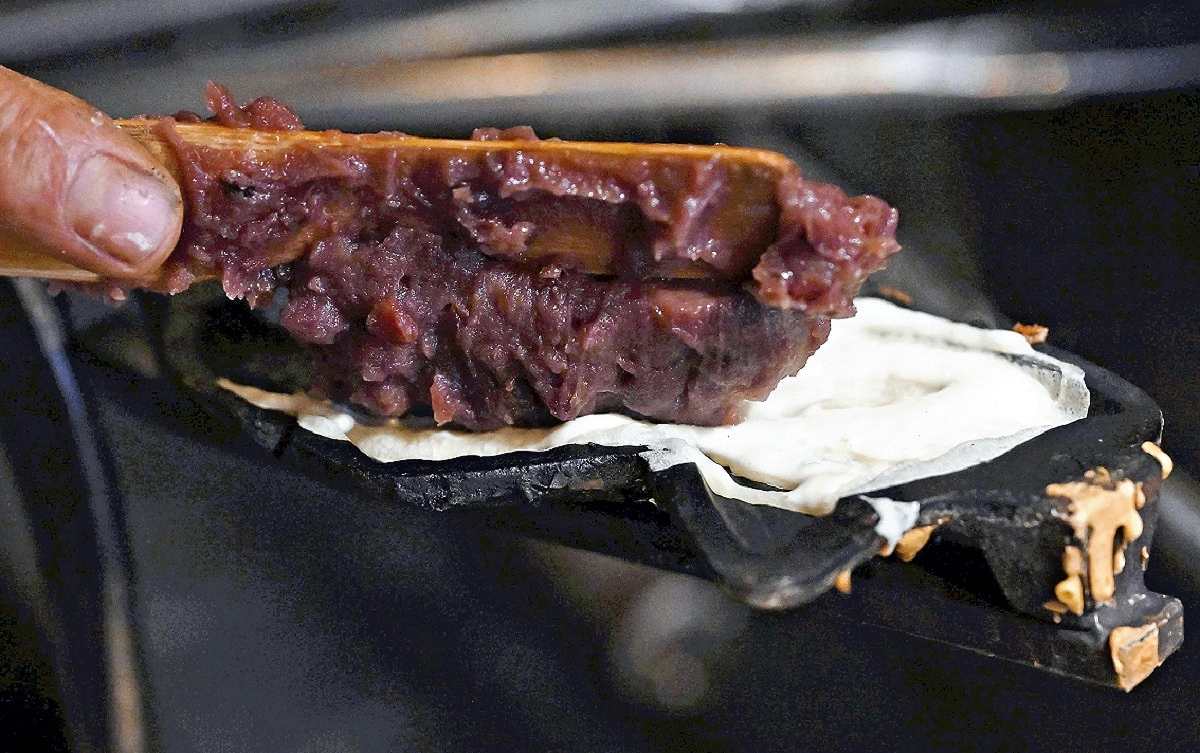
Left: The tools in the foreground are called hashimono, and they are rhythmically turned over to bake taiyaki. Right: Plenty of anko red bean paste is placed in the batter to make taiyaki with the ipponzuri method.
For the red bean paste, azuki beans from Tokachi, Hokkaido, are cooked for eight hours. The ingredients are quite simple: azuki beans, sugar and salt. The reason why the shop continues to bake taiyaki with a thin crust is because they believe that the taste of anko is the most important part of taiyaki.
I took a freshly baked taiyaki and as I bit into it, the aroma and crispy texture of the skin and the sweetness of the anko filling spread in my mouth. The taikyaki is tasty when eaten freshly baked, but, Kanbe said, “To enjoy the sweetness of the red bean paste, I recommend lightly toasting it in the oven after some time has passed. It also goes well with milk.”
When the bakery first started out, it was popular because tai, a Japanese word for sea bream fish, is considered good luck. I enjoyed the taiyaki, which made me excited. Now I am looking forward to reheating and eating the taiyaki I bought to take home.
***
Naniwaya Sohonten
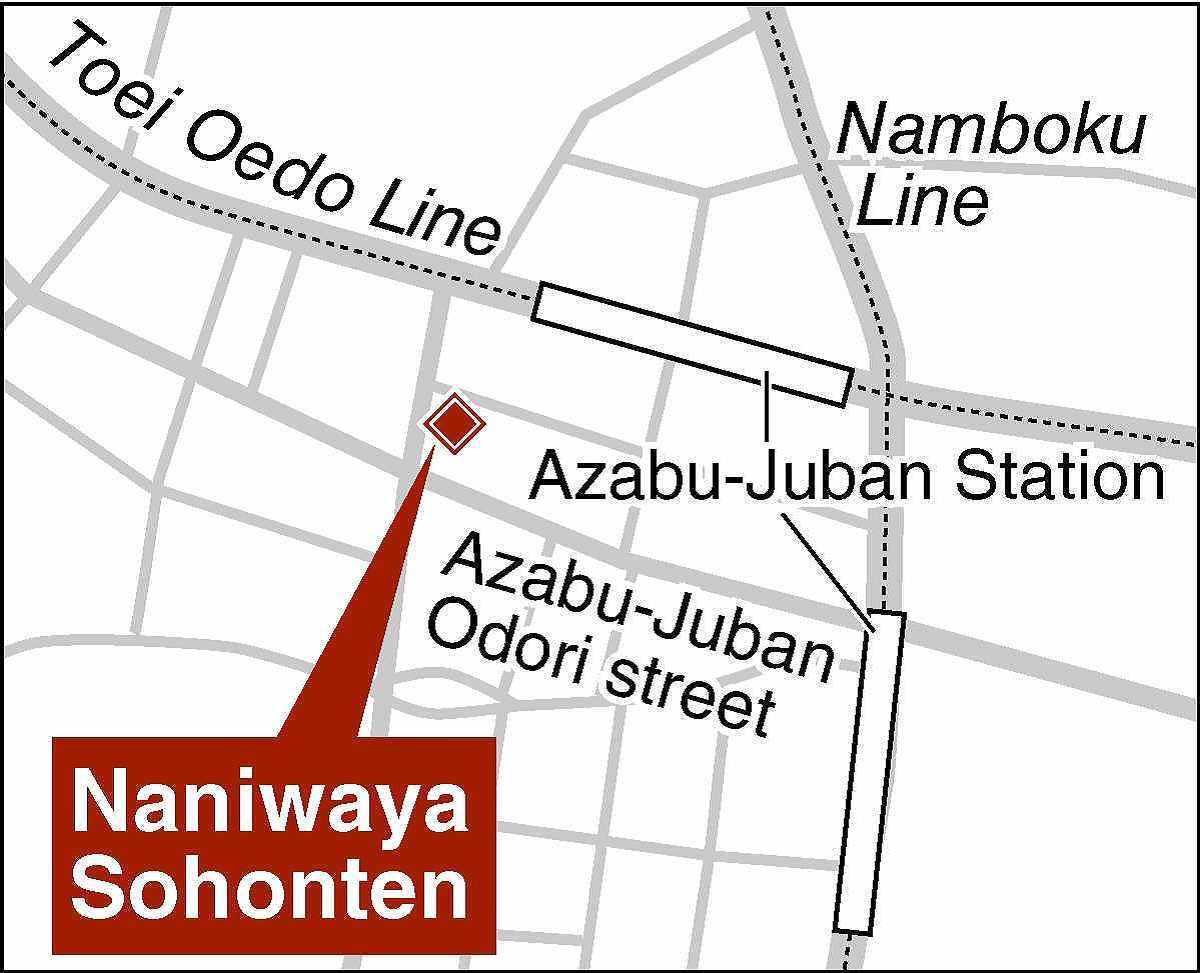
Address: 1-8-14 Azabu-Juban, Minato Ward, Tokyo
Access: 2 minute walk from Azabu-Juban Station on Toei Oedo Line or Namboku Line
Hours: Open from 11 a.m. to 7 p.m. Closed on Tuesdays and Wednesdays. Price is ¥200 including tax per taiyaki. On the second floor, there is a cafe serving taiyaki.
Related Tags
"Features" POPULAR ARTICLE
-

Sanrio to Open Museum in Yamanashi Pref. Dedicated to Founder, Exhibits Include Hello Kitty, Other Characters
-
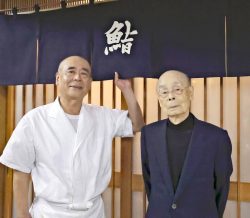
Legendary Sushi Chef Jiro Ono Turns 100: ‘I Have No Regrets’
-

Autumn Foliage Surrounds Visitors to Tokyo’s Showa Kinen Park
-

My Daughter No Longer Speaks to Me, But I Want to See Her and My Grandchild
-

Kumamoto: Public Bath Refurbished as Library Where You Can Chat, Take Photos
JN ACCESS RANKING
-

Keidanren Chairman Yoshinobu Tsutsui Visits Kashiwazaki-Kariwa Nuclear Power Plant; Inspects New Emergency Safety System
-

Imports of Rare Earths from China Facing Delays, May Be Caused by Deterioration of Japan-China Relations
-

University of Tokyo Professor Discusses Japanese Economic Security in Interview Ahead of Forum
-

Japan Pulls out of Vietnam Nuclear Project, Complicating Hanoi’s Power Plans
-

Govt Aims to Expand NISA Program Lineup, Abolish Age Restriction
























